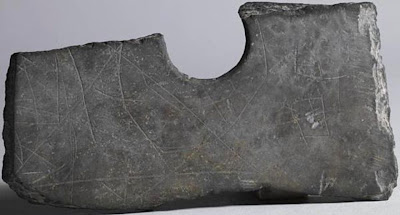As
many of the pre-Reagan era Religio-wingnut leaders retire and/or die
off, beware of the new breed. Lou Engle is one of the new breed.
Although Engle has been kicking around for more than a decade, it is
only in the past few years that he and the New Apostolic Reformation
(NAR), the charismatic evangelical political and religious movement that
he has come to personify, has made such a splash that it threatens to
drown out the more traditional voices of the christian wingnuts.
In 2000, when the U.S. Supreme Court decided that the shrub
would be president, Lou Engle saw it as the answer to his prayers. A few
months before the election, Engle had held an all-day prayer event in
Washington, D.C., that drew approximately 400,000. Although Engle's
prayer rally wasn't as magnetic or media buzz-worthy as when the Promise
Keepers drew nearly one million to the nation's capital three years
earlier, it could be seen as Engle's coming out party.
(The Promise Keepers is a still extant wingnut christian men's
organization whose membership and attendance at its stadium and arena
events soared in the 1990s, and, due to internal squabbles, subsequently
plummeted to earth in the first decade of this century.)
"The prayers of the faithful were answered when the U.S. Supreme
Court handed down the Bush v. Gore decision, giving the election to the shrub," Rachel Tabachnick wrote in a long essay titled "The christian Right, Reborn: The New Apostolic Reformation Goes to War," in
the Spring 2013 issue of Political Research Associates' The Public Eye.
For the NAR, the DC rally was just the beginning of a more public
political journey that has allowed it to become one of the most
important and yet least understood religious/political movements in the
country.
Since that first rally, "Engle has staged more than 20 similar
rallies, and each has attracted tens of thousands of participants to
stadiums across the United States. He and his organization have also
become deeply involved in U.S. politics, especially in anti choice and
antigay organizing," Tabachnick, a PRA research fellow who has over the
past several years become one of the nation's leading experts on the New
Apostolic Reformation, reported.
None other than the venerable Dr. James Dobson, the founder of Focus
on the Family, one of the Christian Right's flagship entities, and a
long-time culture warrior, credited Engle with bringing out the troops
for a rally at Qualcomm Stadium in San Diego one week before Election
Day in 2008, and making a huge difference in helping pass Proposition 8,
California's anti-same-sex marriage initiative. According to
Tabachnick, "Engle's organization mounted a radio campaign and sent out
email and phone blasts in support of Proposition 8, and he urged
attendees to be martyrs for the cause."
Journalist and Talk2Action co-founder, Bruce Wilson described Engle
as "the unofficial prayer leader of the repugican cabal." He has been
called a "radical theocrat," and the Southern Poverty Law Center has
said that he says he can occasionally "venture into bloodlust."
Engle, a New Apostolic Reformation leader, has helped build a
movement that has veered away from what we have come to know as the
"traditional" christian wingnuts. It "is rooted in Charismatic christianity, a cross-denominational belief in modern-day miracles and
the supernatural." It emerged from neo-Pentecostal movement of the 1980s
and "spread to Roman catholics and mainline and evangelical Protestant
cults in the United States and worldwide."
According to Tabachnick, the NAR embraces women and minorities, and
is particularly focused on youth, "sponsoring youth events that look
more like rock concerts than traditional church services." Its "stylish
leaders dress in casual clothes, encourage fasting and repetitive
chanting as a means of inducing altered mental states, and use
sophisticated media strategies and techniques to deliver their message."
It's not all style over substance as the NAR's "most prominent
leaders and prolific authors claim to be creating the 'greatest change
in cult since the Protestant Reformation,' and they describe
themselves as modern-day prophets and apostles."
What the movement is really after is "to unify evangelical and all
Protestant christianity into a postdenominational structure, bringing
about a reformation in the way that churches relate to one other, and in
individual churches' internal governance."
Engle calls for massive "spiritual warfare" that will result in a
complete worldwide "political and social transformation": "The
revolution begins, they believe, with the casting out of demons,
Tabachnick states. "NAR training materials claim that communities around
the world are healed of their problems — experiencing a sudden and
supernatural decline in poverty, crime, corruption, and even
environmental degradation — once demonic influences are mapped and then
purged from society through NAR's particular brand of 'spiritual
warfare,' which is sometimes referred to as 'power evangelism.'"
Demonic activity has caused the downfall of society, both at home and
abroad. "The sources of demonic activity can include homosexuality,
abortion, non-christian religions, and even sins from the past."
According to NAR leaders, "strategic prayer can literally alter
circumstances in the temporal world: the spontaneous burning and
destruction of religious icons and structures," Tabachnick noted.
To achieve its goals, the NAR aims to have its apostles seize control
over every important aspect of society, including, the government,
military, entertainment industry and education."
If the NAR falls short of world denomination, it intends, as a minimum, to "turn America back to god."
Why pay any attention to what thus far appears to be a marginally effective political movement?
Tabachnick argues that, "The movement is bringing about profound
changes in the character of conservative christianity and the christian wingnuts, both in the United States and around the globe." It is not only
"building new institutions, but [it is] creating new networks and
alliances among long-established institutions. The NAR's leaders are
methodically transforming the nature of the relationship between
cultists and their leaders, creating a much more authoritarian
leadership style than has traditionally been true of evangelical christianity. That shift is central to the movement's political
potential.
"The NAR's charismatic, authoritarian leaders are well-positioned to
reinvent the christian wingnuts, infusing it with a new wave of energy,
expanding its base of support, conducting sophisticated political
campaigns, and doubling down on right-wing social and economic agendas —
all while giving the christian wingnuts a new gloss of openness and
diversity."
The "leading theorist" and the NAR's "most important organizing
force" is C. Peter Wagner, a professor of "church growth" for three
decades at Fuller Theological Seminary, a nondenominational evangelical
seminary in Pasadena, CA. In the 1990's, Wagner headed up the
International Coalition of Apostles, a networking group that "presided
over an association of apostles — many of which, in turn, claimed
hundreds or thousands of ministries under their leadership." He "also
formed networks of faith-healing ministries, 'deliverance ministries'
that claim to free people from demon possession, and an inner-circle of
leading prophets, in addition to the Wagner Leadership Institute (WLI), a
network of training programs in locations across the United States,
Canada, and several Asian nations."
Tabachnick pointed out that the New Apostolic Reformation's influence
does not end at America's shores: "Engle was featured extensively in god Loves Uganda, a documentary about U.S. evangelical wingnuts'
antigay influence in Uganda, where the infamous Anti-Homosexuality 'Kill
the Gays' Bill was first introduced in 2009."
The NAR might have reached its pinnacle in the summer of 2011 when
30,000 people attended a prayer rally in Houston, Texas. Promoted
heavily of Texas Governor Rick Perry, then a leading contender for the repugican cabal's presidential nomination, the rally featured several
NAR leaders, "apostles and prophets who had for years remained under the
radar were suddenly subjected to scrutiny from the media."
"Exposed to this scrutiny, NAR's leaders publicly distanced
themselves from some of their more radical ideology. Webpages were
removed and websites were amended to explain that the NAR's apostles are
either not Dominionists, or that the term simply means to gain
influence in society."
This increased scrutiny may have led to a retreat of sorts, but certainly not to surrender.
















